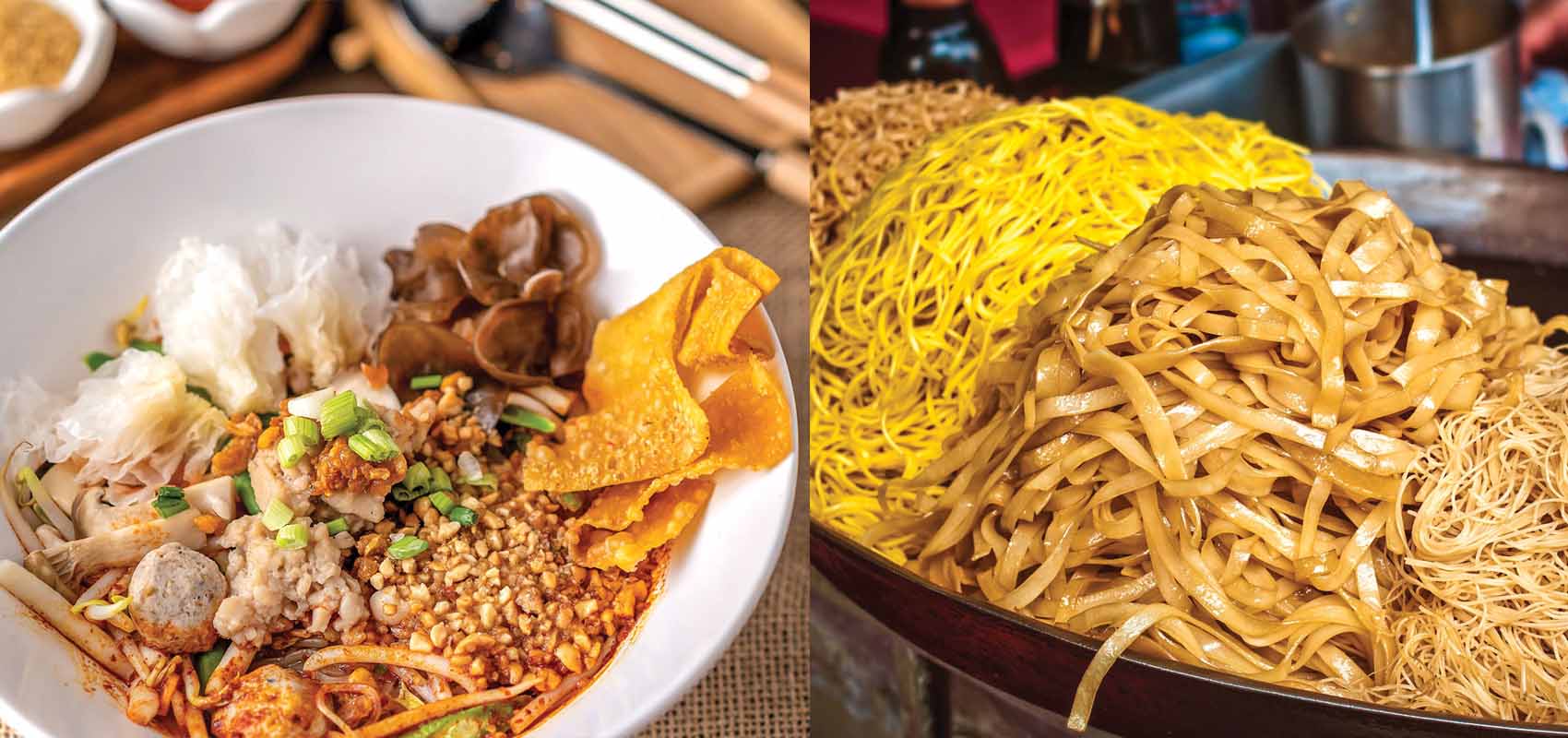Feast for the senses
A sustainable culinary trip to Thailand
By Twyla Campbell
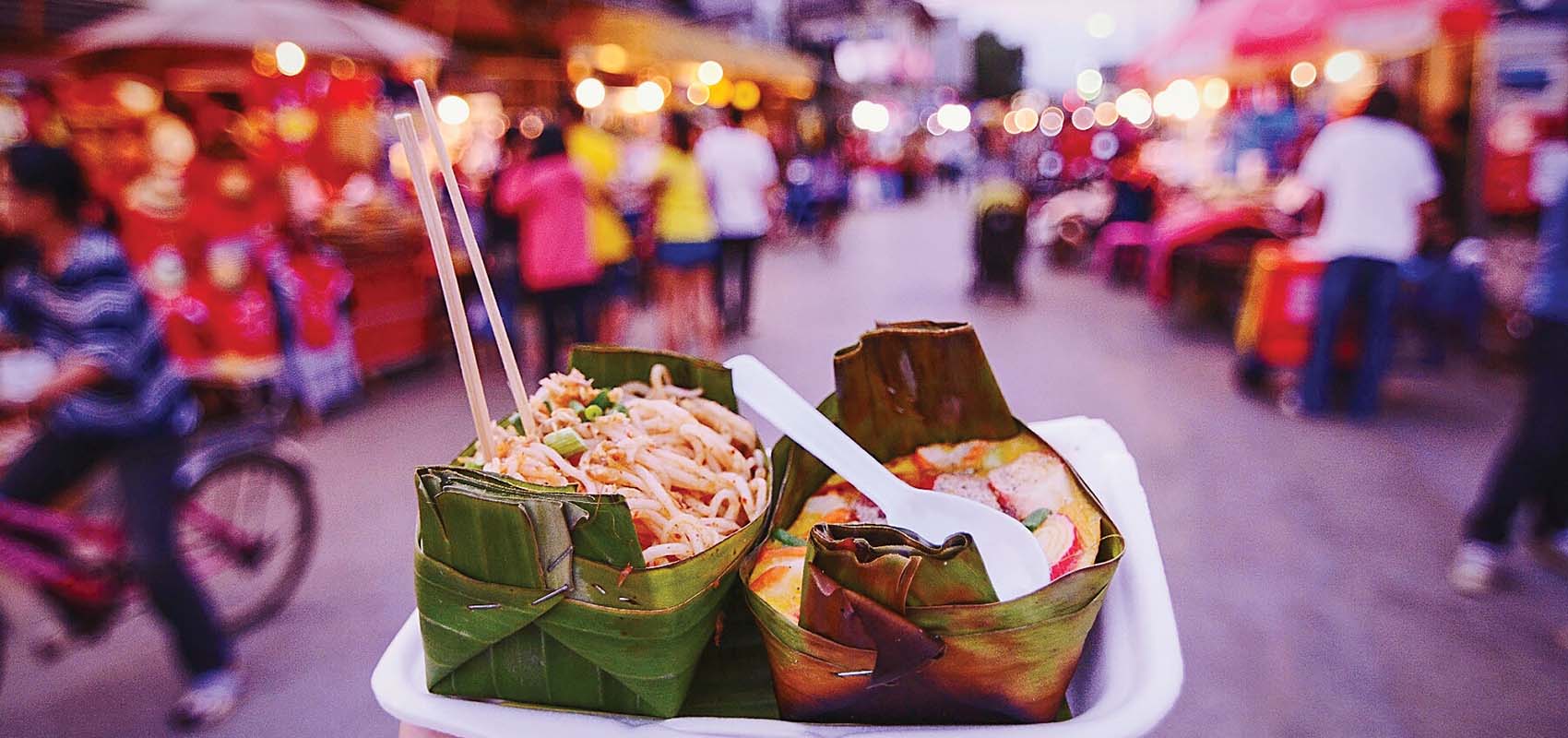
No matter the meal, the region, or your dietary preference, you're destined to eat a lot of noodles when you visit Thailand. Noodles wrapped in banana leaves are a popular street-food snack.
When I was six, my uncle returned from an overseas posting with the United States Air Force. He regaled us with tales of Thailand: an enchanting place known as “the land of smiles,” with friendly people, turquoise water, pristine beaches and food so delicious, he could hardly find words to describe it. To a landlocked Canadian kid, it sounded like paradise. In that moment, I vowed that one day I, too, would go to this magical place.
Forty-five years later, I finally fulfilled that promise to myself on a two-week Thai journey. I devoured bowls of spicy coconut curry, fed rescued elephants and survived white-knuckled rides in motorized rickshaws called tuk-tuks. Though not without a keen sense of caution about impact: in the decades since my uncle’s visit, the damaging effects of over-tourism had taken their toll here.
Thankfully, I discovered in Thailand a nation at the forefront of sustainable tourism. The spirit of sustainability is evident, from government initiatives to tiny neighbourhood noodle stands and new plant-based dining options cropping up across the country.
“Sustainability is of the utmost importance as we strive to preserve both natural settings and cityscapes,” says Santi Sawangcharoen, director of the Tourism Authority of Thailand. “More and more travellers are opting for planet-first options – and prioritizing destinations that provide plentiful sustainable choices.” Thailand has banned smoking on beaches, reduced single-use plastics and temporarily closed popular sites like
Maya Bay, the filming location of Leonardo DiCaprio’s 2000 movie The Beach. Such efforts have restored those beaches and fostered the recovery of reefs, vegetation and sea life. Private businesses are also investing in more eco-minded measures. Many Thai resorts, eateries and tourist sites build with recycled materials, use ingredients grown on-property, and employ renewable energy systems.
Also, the Green Bangkok 2030 Project offers optimism through the next decade. Thailand’s frenetic capital is in constant motion: motorcycles, tuk-tuks, cars, delivery trucks, nightlife, music and the pulse of 12 million people. As Sawangcharoen says, the initiative is “rewilding the city with significantly more green space and reducing emissions by 40 per cent within the decade.” By the end of the program, nearly a third of the city’s total area will be covered with trees. Think fewer neon-soaked streets, more family- friendly neighbourhoods.
IS IT VEGAN? JUST ASK
If you’re uncertain whether a Thai dish is truly vegetarian or vegan, it’s best to ask your server outright. Many vegetable-based Thai dishes contain fish sauce, or pork or chicken broth. And asking for a dish that is “mang sa wirat” (without meat) could mean the meat was simply taken out before serving.
Scenes from culinary Thailand and beyond. Bangkok chain So Vegan specializes in meatless dishes like Sukhothai Tom Yum Noodles (left) and a rainbow of Thai noodles (right).
Bangkok
In Thailand, my inner child was hoping for magic, while my adult self just wanted to taste some incredible local dishes. And so, I searched. In Bangkok, the rewards were quick and plentiful. Everywhere I went, steam from gigantic vats of food rose into the air from sunrise to sunset, while the spicy smells of market stalls enveloped me like a warm hug.
No matter the region you visit, what meal of the day it is, or your dietary preference, you’re going to eat noodles here – lots of them. Along with sticky rice (also plentiful), menus typically include spicy papaya salad with salted crab, panang curries and creamy iced tea or cold coffee. In Thailand’s capital, you can spend very little on immensely satisfying food, from 55 Thai baht ($2 Cdn.) for a bowl of noodles in an open-air space, to substantially more at a Michelin-rated restaurant.
Supanniga Eating Room offers an elevated dining experience consisting of traditional recipes from the owner’s grandmother, and is a perfect example of Thailand’s high-low dualism. This restaurant has a Michelin Guide
Bib Gourmand rating, awarded to restaurants that serve high-quality food at reasonable prices. For two people, my bill for four dishes – including Pon Yang Kham steak (Wagyu crossed with locally raised Charolais beef), wine and cocktails – rang in at 1,791 baht, or about $65 Cdn. A similar meal in Vancouver or Toronto could easily set you back a few hundred dollars.
MEMBERS SAVE
Worried about getting yourself to Vancouver International Airport to catch a flight? If you’re an Evo Member, we’ve got you: there’s a satellite Home Zone at Park’N Fly YVR. Just drive your Evo there and end your trip for a $5 drop-off fee. evo.ca/yvrparking
Haoma is another Michelin-rated restaurant, this one with a star for Chef Deepanker Khosla’s exquisite meat, seafood and vegetarian offerings, as well as a Green Star for meeting and maintaining high sustainable practices. Haoma offers neo-Indian cuisine à la carte and through two multi-course tasting menus: one with meat and seafood, one vegetarian. Both tasting menus cost around 4,000 baht (about $157 Cdn.), which places this restaurant in the fine-dining category.
Bangkok chain So Vegan offers a variety of ready-to-eat dishes, as well as frozen food to take home. And at 90 to 150 baht per meal, it’s a little easier on the wallet than Haoma.
CANES straddles both price categories. Offered at their “plant-based culinary lab” in Muang Thong Thani, northern Bangkok, the 14-course vegan tasting menu paired with cocktails rings in at 3,950 baht, but at their casual dining location on Pradit Manutham Road, a vegan burger can be had for 250 baht and a bowl of miso ramen for 350. CANES, by the way, is an acronym for Cruelty-free, Altruistic, Natural, Evolutionary and Sustainable.
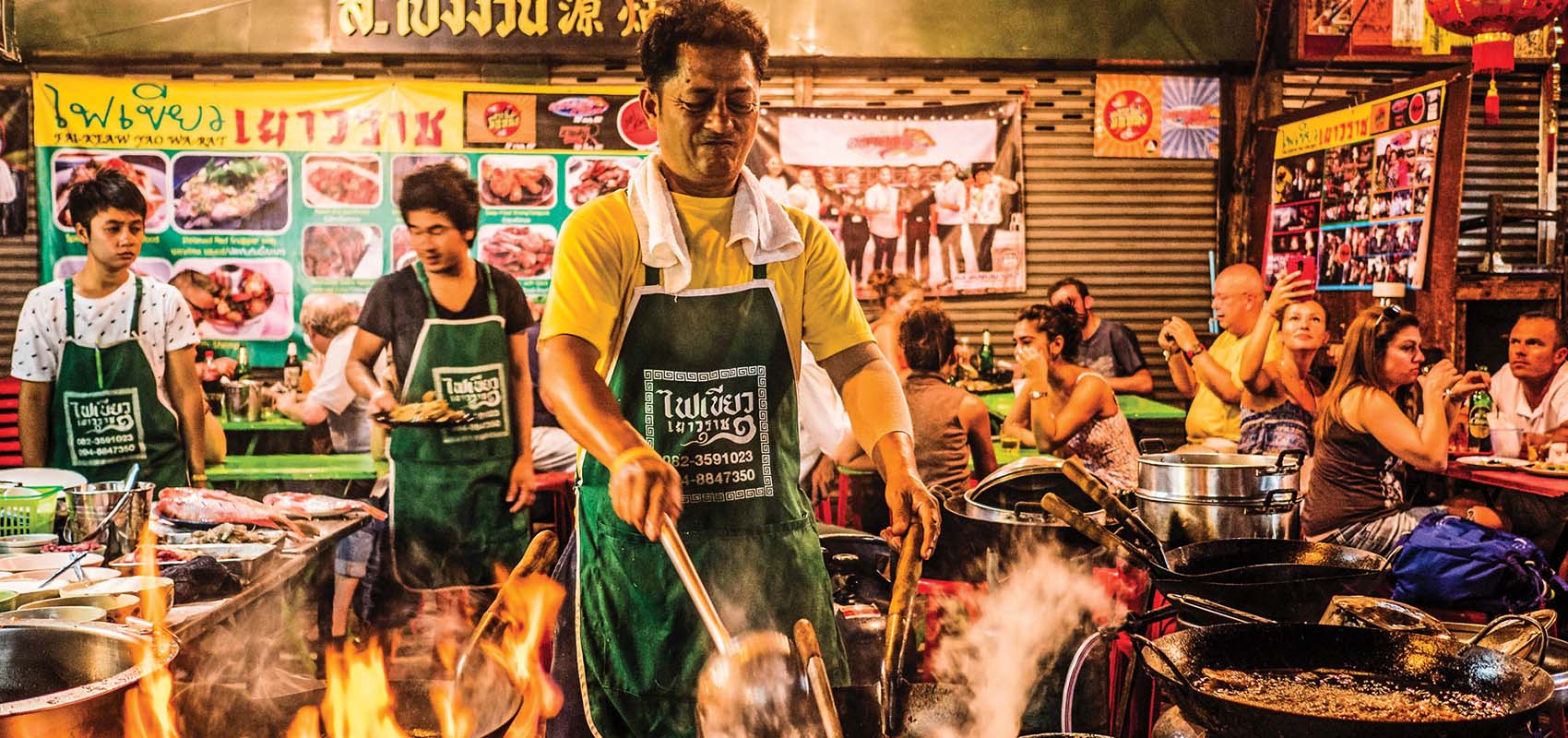
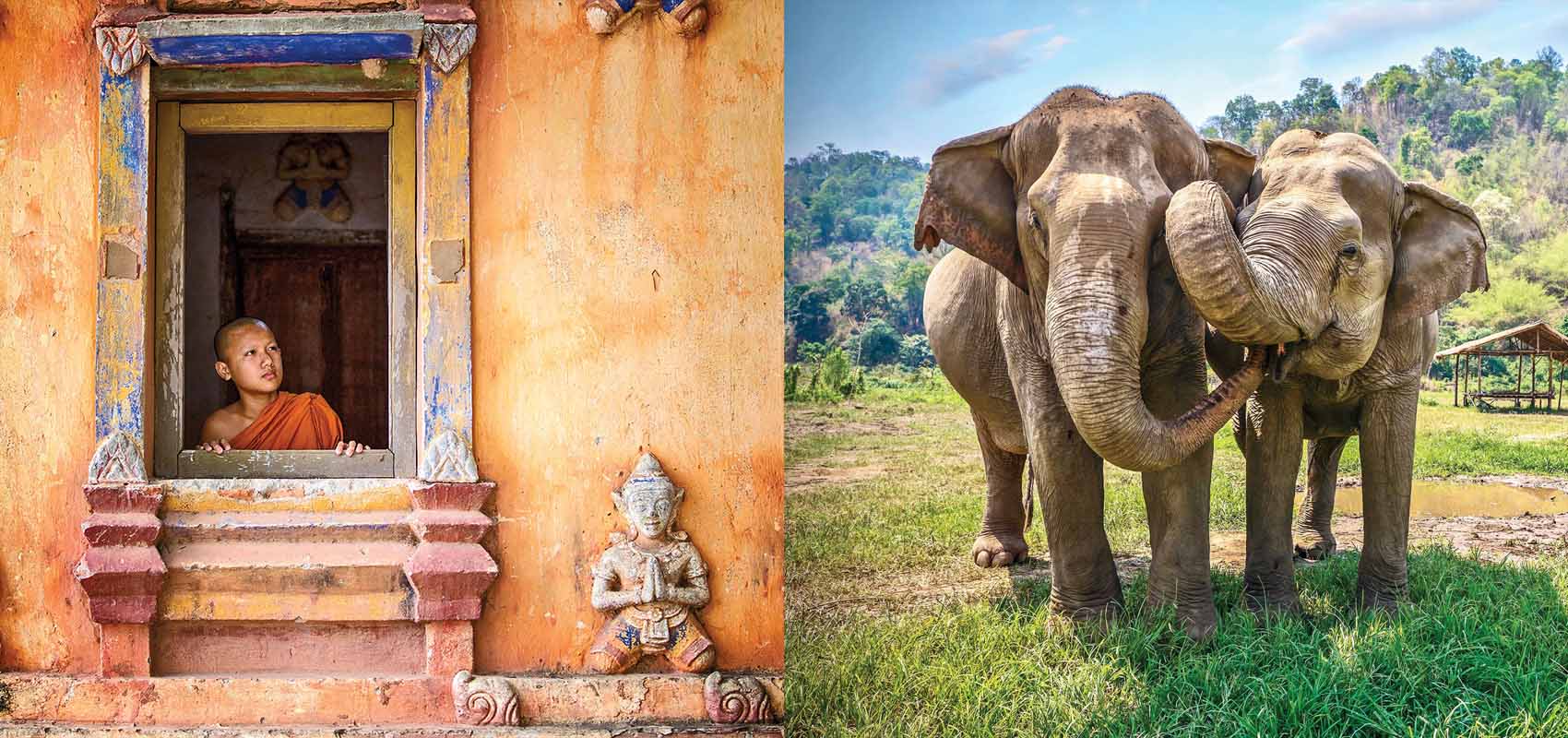
(above) A cook preps streetside in Bangkok's Chinatown; (left) Elephants nuzzle in northern Thailand; (right) Novice monk gazes out the window of a Buddhist temple.
Chiang Mai
Nestled near Mount Inthanon – Thailand’s tallest peak – the ancient northern city of Chiang Mai is less bustling than Bangkok but it, too, offers an explosion of sights, smells and sounds. The low chanting of monks echoes into temple courtyards and mixes with the clucking of copper-coloured chickens. On the streets, vendors paint a rainbow in produce: bright pink dragon fruit, purple mangosteens, emerald bamboo shoots and red Thai chilis. Many markets are located near or inside the walls of the Old City.
At the night market on Chang Khlan Road, loops of grilled sausage hang like thick necklaces from stall frames. The region is known for sai oua – a fragrant grilled sausage containing lemongrass, galangal, kaffir lime, coriander and red curry paste. I paid about 30 baht ($1.10 Cdn.) for a six-inch piece. I also sampled sai krok, garlicky fermented sausage from the Isaan region, which comes with sticky rice to temper the intense spice.
The most recognized dish of the Chiang Mai area is khao soi, a combination of soft and crisp noodles in a bowl of rich coconut curry. Traditionally, khao soi contains chicken or beef but it’s becoming more common to see it served with tofu as the protein, instead. Pun Pun, a plant-based restaurant on the grounds of Wat Suan Dok, a Buddhist temple on Suthep Road, is favoured amongst locals and tourists alike for its meat-free khao soi.
MEMBERS SAVE
Get safe and convenient medical care while travelling with BCAA’s 24/7 Virtual Care.* From getting a prescription filled through a video call or having a doctor treat you wherever you’re staying, we’ll be there when you need us most. Plus, BCAA Members save 10% on BCAA Travel Insurance. bcaa.com/travel
Pun Pun is not only known for the tasty plant-based fare it serves at the restaurant, but also for its mother business, a farm north of Chiang Mai where all of the restaurant’s produce is grown. At Pun Pun Center for Self Reliance, visitors are welcome to spend time learning about the organization’s seed-saving practices or participate in workshops on gardening, natural building techniques and sustainable living.
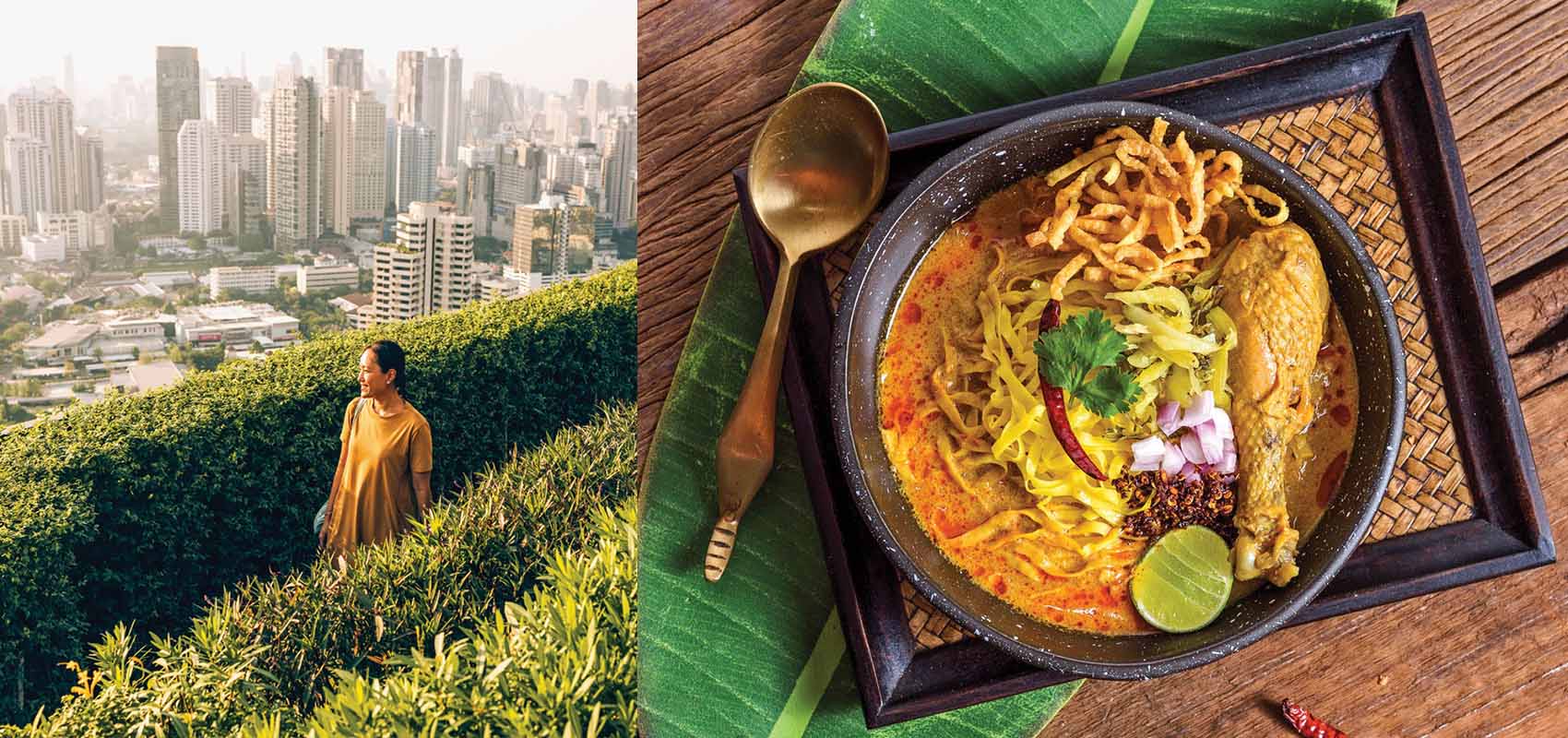
Other businesses are following suit. In 2017, budding chocolatiers Kristian Levinsen and Neil Ransom founded Siamaya, a bean-to-bar chocolate company located in Chiang Mai’s Old City. The friends and ex-pats (Danish and American, respectively) started selling handcrafted bars at city markets as a weekend hobby. But they quickly gained recognition for infusing local flavours – masala chai, pomelo and coconut milk, among others – and sourcing cacao from ethical producers.
“Cacao is largely grown in areas where sustainability and social responsibility take a backseat to profit,” Levinsen says. “So, we buy ours – at a fair price – directly from local farmers and cooperatives in Thailand.” The company also employs an Indigenous printer for its recycled packaging, and all of the printer’s proceeds go to support the hill tribes in northern Thailand. While savouring a square of chai-infused Siamaya chocolate after returning home from my Thai adventure, I realized my uncle was right all those years ago. Thailand is one of the most magical places on the planet. And with eco-friendly initiatives to protect its beautiful resources, I look forward to experiencing that magic again and again.
First published in the Spring/Summer 2023 BCAA Magazine. Read more from BCAA Magazine.
Photo Credit: iStock, Getty
TIP!
Wherever you’re headed, check travel safety advisories before you go.








